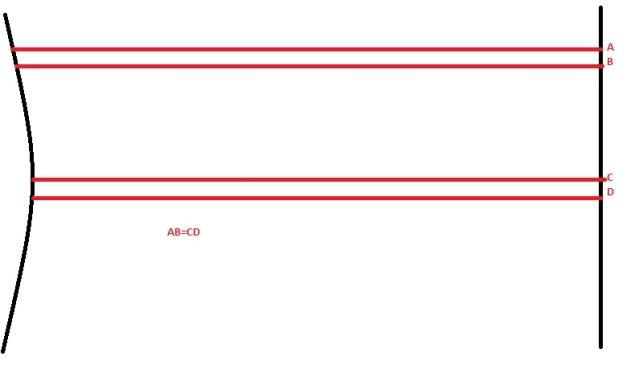Re: 3 Experiments You Can Do At Home that PROVE THE EARTH IS FLAT
Oh wow...The point isn't the difference between the length of the line...
I'll clarify it.
On the left you've got the sun, which rays are parallel when they come to Earth (as the sun is far far away, a small deviation would make the ray miss earth by thousands miles)
Here the sun is on the left, earth on the right.
[img]http://i262.photobucket.com/albums/ii112/biladze/sun.jpg[img]
The comparison is not the length of the rays...It's the comparison between their impact area on earth. You can see that near the equatorial area the CD line (line between point C and D...) is small compared to the AB line.
The lines I'm talking about are highlit in orange.
Therefore, the CD area will be much warmer than the AB one, because of more energy per square kilometer (or square mile, whatever)
Gravity doesn't make things fall down. It makes them come towards the center of earth. Whether you're in the USA or in Australia, stuff will fall on the ground.
Oh wow...The point isn't the difference between the length of the line...
I'll clarify it.
On the left you've got the sun, which rays are parallel when they come to Earth (as the sun is far far away, a small deviation would make the ray miss earth by thousands miles)
Here the sun is on the left, earth on the right.
[img]http://i262.photobucket.com/albums/ii112/biladze/sun.jpg[img]
The comparison is not the length of the rays...It's the comparison between their impact area on earth. You can see that near the equatorial area the CD line (line between point C and D...) is small compared to the AB line.
The lines I'm talking about are highlit in orange.
Therefore, the CD area will be much warmer than the AB one, because of more energy per square kilometer (or square mile, whatever)
If gravity makes things fall down, then anything on the bottom of a spherical earth will fall off.






 Genesis 1:1 In the beginning God created the heaven and the earth
Genesis 1:1 In the beginning God created the heaven and the earth

Comment